For my second day traveling the Going To The Sun Road, I decided to check out a few things that I passed on Day 4. The first was Lake McDonald Lodge, located just off GTTS Road near the north end of the lake.
While the lodge itself is impressive (in fact, it’s one of several great old lodges in the area) I was really here to see the red “jammer” busses, which are nearly as famous as the glaciers themselves. While you’re likely to see one or two of these parked at Logan Pass, and drive by a few more on GTTS Road, your best bet for an up-close encounter is here at Lake McDonald Lodge.
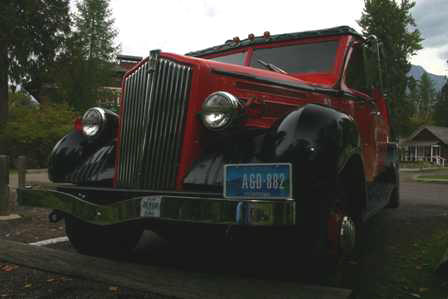
Glacier National Park’s fleet of 33 busses have been navigating the GTTS Road since the late 1930’s. The busses were built by the White Motor Company, and earned the name “Jammers” because the original manual transmissions required the drivers “jam” through the gears, as they climbed the steep road. Automatic transmissions were installed in 1989, and then in 1999-2002, the entire fleet was thoroughly overhauled. They’re now fueled by propane.
17 passengers can ride aboard each bus, and on warm days the driver will roll back the bus’s canvas roof, allowing for a great view on the climb to Logan Pass.
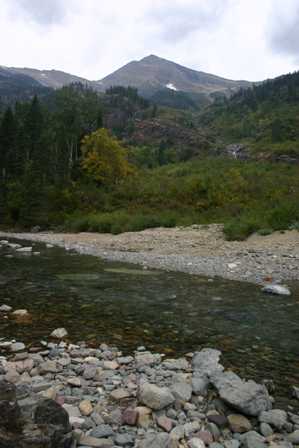
Once back on the road, Lake McDonald quickly turned into a small river that followed the road for several miles. I stopped at one location for a look…
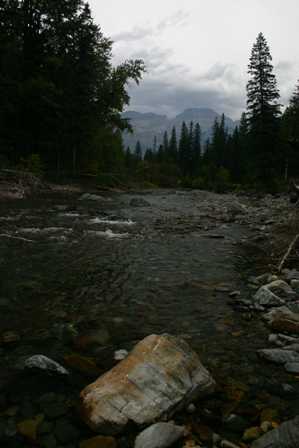
… but the beauty of this area was definitely dulled by the heavy clouds that hung overhead.
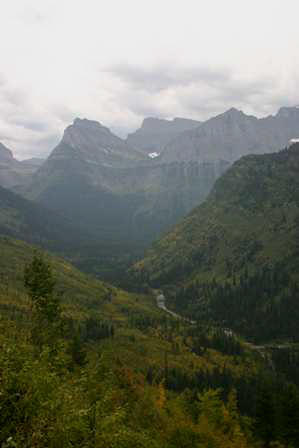
Since I had seen all of this the previous day (and on a much more beautiful day), I only stopped a couple of times as I climbed GTTS Road.
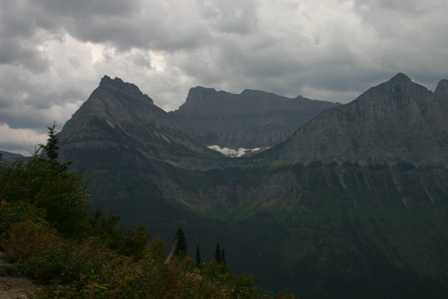
That small patch of white you see, nestled in the bowl-shaped cirque above, is not a glacier. It’s just snow–old, dirty leftovers from the previous winter and spring. In fact, most of the patches of ice and snow you see in Glacier are just that: ice and snow. Of the roughly 150 mighty glaciers that helped carve the park’s unique mountain landscape, only 27 remain (as of 2005). Most of these are small, and quickly melting away, and by one estimate, Glacier National Park will be completely free of glaciers by the year 2021.†
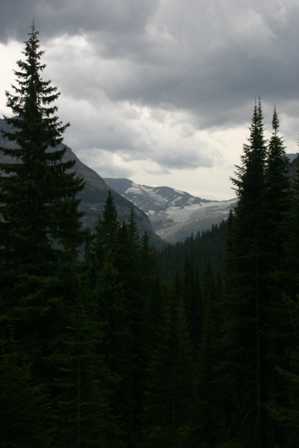
Most of the park’s remaining glaciers are only accessible by a very long hike, but thankfully, there is one glacier you can see, without any greater effort than stepping out of your car. The Jackson Glacier is located on a mountainside, several miles away.
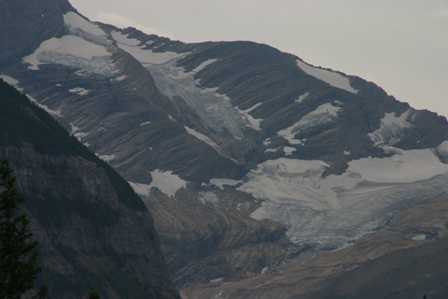
Here’s a zoomed-in view. To get closer to Jackson Glacier, you could take Gunsight Pass Trail to Jackson Lake, then follow a side trail for a while, but this would require miles of hiking.
Note: This trip was first published in 2006. Much of the same area was covered in the Big Sky trip in 2014.

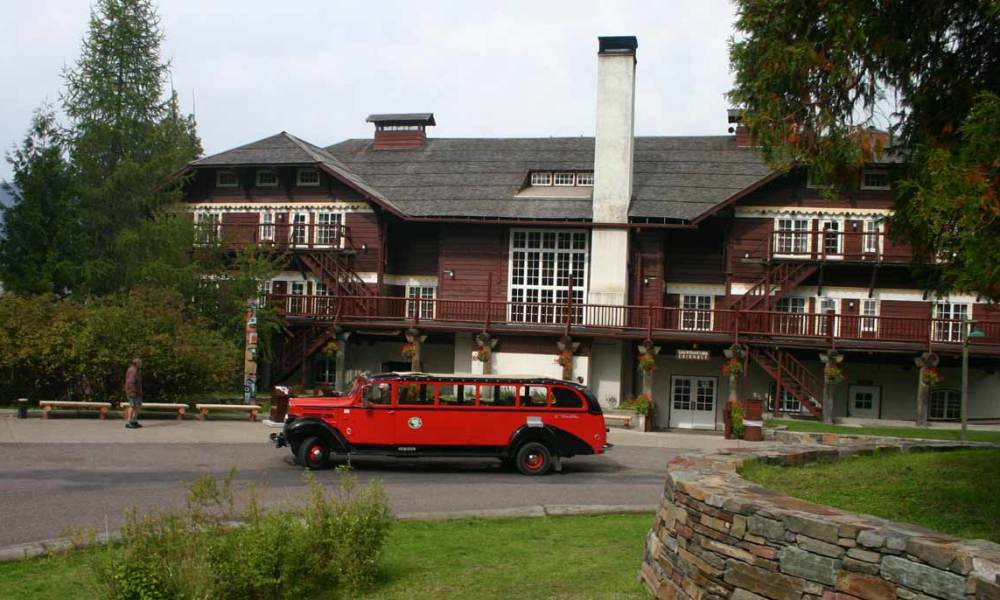


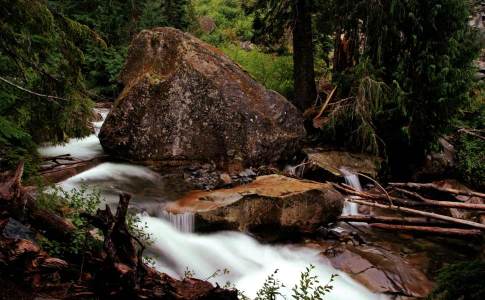
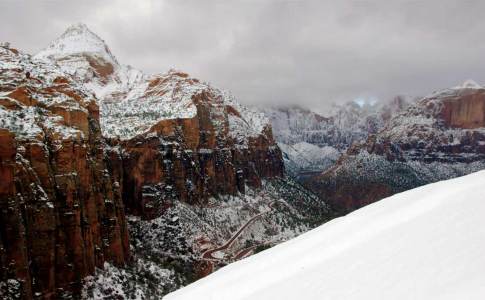
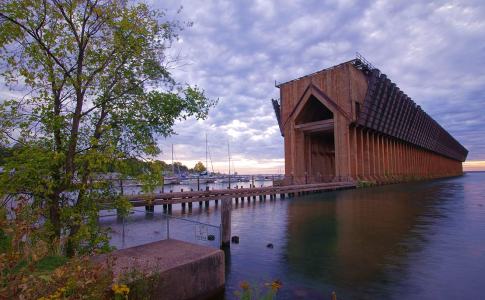
No comments